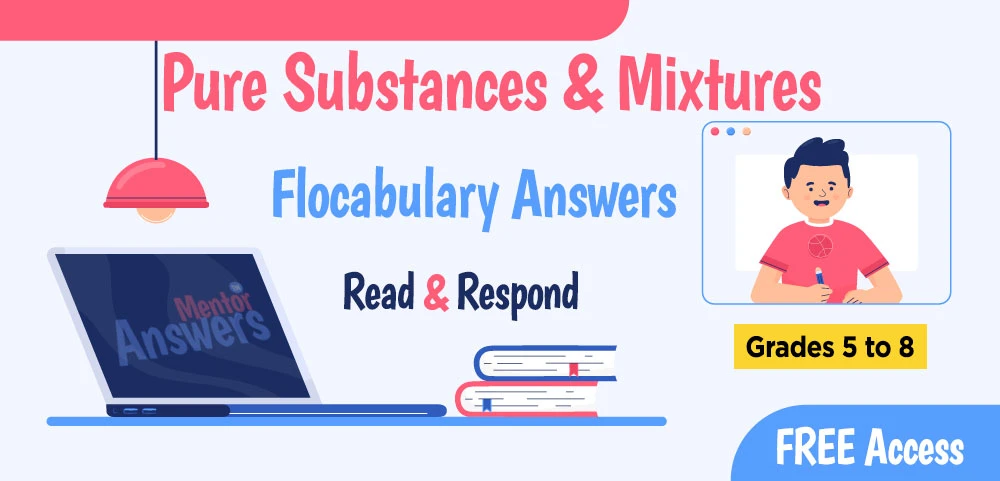Are you looking for a reliable source of answers for the Pure Substances & Mixtures Flocabulary Quiz, Read & Respond? You’ve come to the right place!
We have a team of teachers who have checked and verified the correct answers for all the questions. You can trust our expertise and save time by using our answers key.
Pure Substances & Mixtures Flocabulary Quiz Answers Key
- homogenous mixtures and elements
- solutions and compounds
- elements and compounds
- mixtures and elements
- mixture
- compound
- atom
- molecule
- heterogeneous
- homogenous
- pure substances
- elements
- carbon monoxide, a toxic gas with the chemical formula CO
- simple syrup, a substance that has two parts sugar to every one part of water throughout
- beach sand, a substance that can contain rocks, shells, metals and other substances distributed unevenly throughout
- sulfur, a substance with atomic number 16 and the symbol S on the periodic table.
- atom
- element
- compound
- mixture
- element
- compound
- heterogeneous mixture
- solution
- element
- compound
- heterogeneous mixture
- solution
- atom
- element
- compound
- mixture
- element
- compound
- heterogeneous mixture
- solution
- water
- lemon juice
- sugar
- There is no solvent in lemonade.
Pure Substances & Mixtures Flocabulary Read & Respond Answers
Expand your knowledge by exploring the Read & Respond answers related to the topic of our Subject:
- Iron is silvery-white or gray in color.
- Iron has a boiling point of about 3,000°C.
- Iron is a magnetic element.
- Iron and sulfur react to form iron sulfide.
- Oxygen and chlorine have the same symbols.
- Oxygen atoms have fewer protons than chlorine atoms.
- Oxygen and chlorine have the same properties.
- Oxygen atoms have twice as many protons as chlorine atoms.
- They can only be separated chemically.
- They are always liquid at room temperature.
- They contain the atoms of just one element.
- They have the same properties as their elements.
- separating water into different glasses
- breaking frozen ice cubes with a hammer
- running an electric current through water
- boiling water to evaporate it on a stove
- Every molecule of the same compound will have different properties.
- Every molecule of a compound has the same proportion of elements.
- Molecules can be physically separated into smaller units of a compound.
- Molecules cannot be represented by chemical formulae.
- a fruit salad
- water in a glass
- sugar
- salt
- Heterogeneous mixtures cannot be physically separated, while homogeneous mixtures can be.
- Heterogeneous mixtures are chemically bonded, while homogeneous mixtures are physically blended.
- Heterogeneous mixtures are all made with soil, while homogeneous mixtures all contain the universal solvent water.
- Heterogeneous mixtures aren’t evenly mixed, while homogeneous mixtures have the same properties throughout.
If you have any questions or need more answers key for your favorite subject, please leave a comment below or contact us through our website. We would love to hear from you and assist you in your learning journey.
Are you interested in delving into additional subjects related to Flocabulary? Check Here To Get All Flocabulary Answers Key

